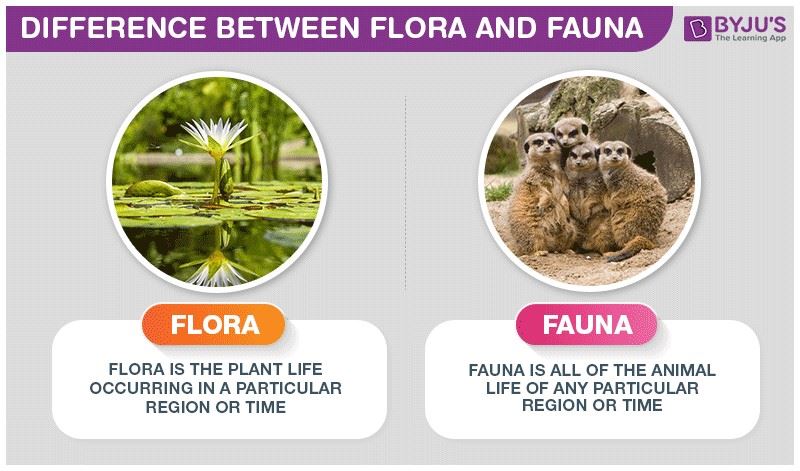Difference Between Flora and Fauna are quite obvious and any elementary student would be able to tell apart the two. Flora means all organisms that can synthesize its own food and are mostly immobile. And this majorly includes all plants, trees shrubs etc. Then fauna are classified as organisms that have to acquire food and are generally mobile.

Difference Between Flora and Fauna
The difference Between Flora and Fauna is quite obvious, but there are various life forms that posses and display characteristics of both. Organisms such as Euglena can behave like plants- as in make their own food and also eat- like how animals eat. Below are the most important differences between flora and fauna:
|
Difference Between Flora and Fauna |
|
|
Flora |
Fauna |
|
Represents all plant life |
Represents all animal life |
|
Almost all members can make their own food |
Have to acquire food from plants or other animals |
|
Lacks mobility |
Members are mobile |
|
Has a cell wall |
Doesn’t have a cell wall |
|
Examples of flora include palm trees, grass, sunflowers, etc. |
Fauna includes lions, tigers, bears, cows etc. |
Beyond Flora and Fauna
Carl Linnaeus introduced two kingdoms, namely: Vegetabilia (flora) and Animalia (fauna) to categorize the wide variety of life way back in 1735. But now, there are 6 kingdoms classifying all forms of life that we have discovered up until now. (Animalia, Plantae, Fungi, Protista, Archaea/Archaebacteria, and Bacteria/Eubacteria). Scientifically, this is how we classify life. But what about viruses? They are not technically “alive” because they lack features that prevent them being classified as being “alive.” And they also have enough features of living things that prevent them from being classified as “non-living.”
Related Links
Comments